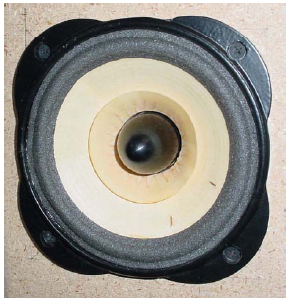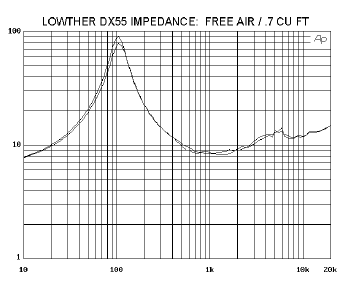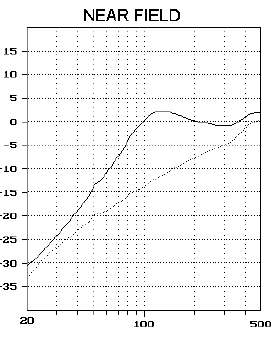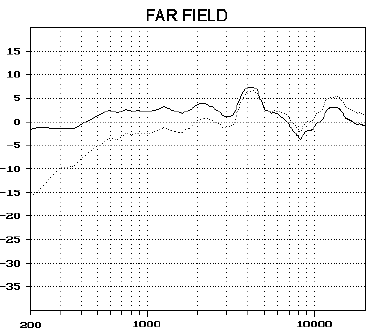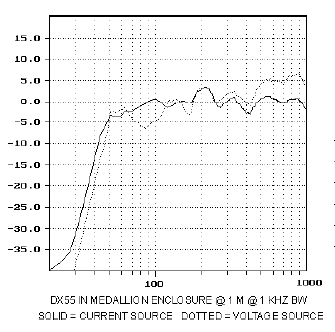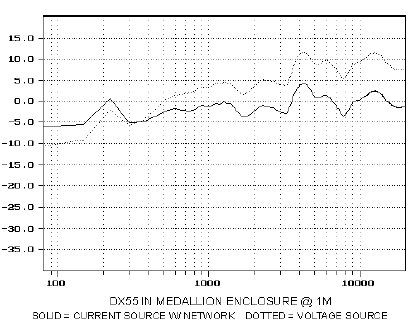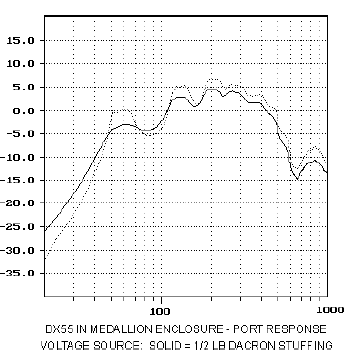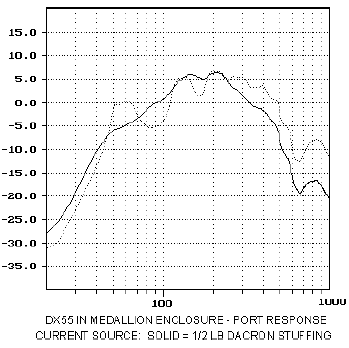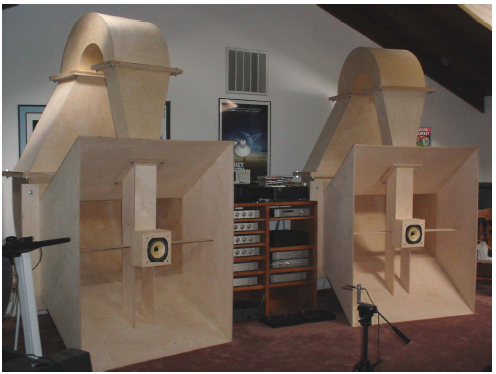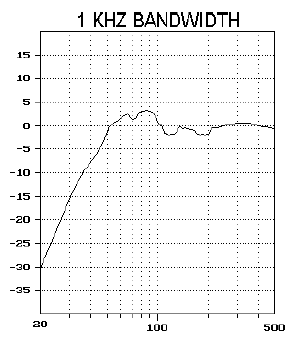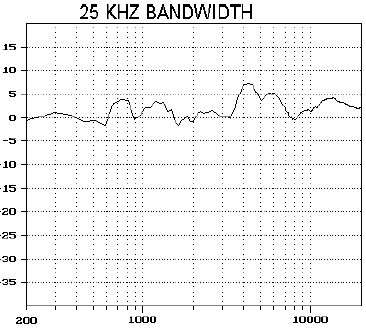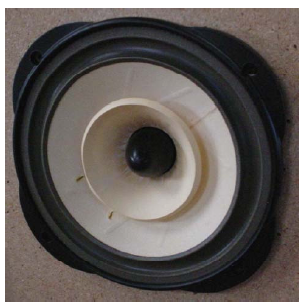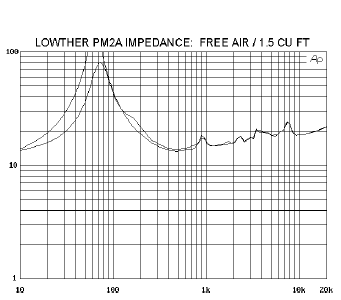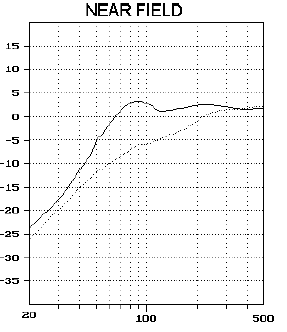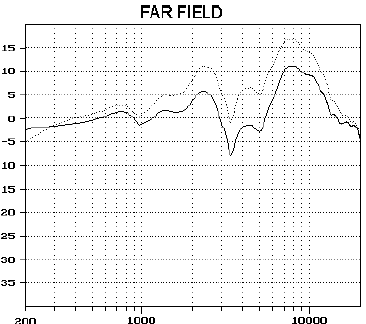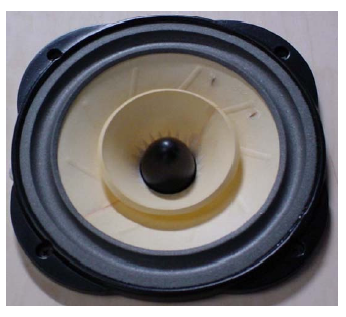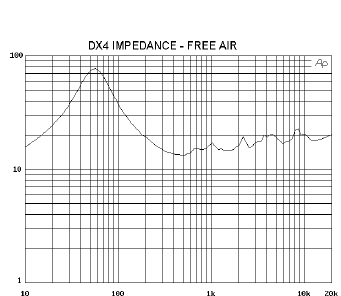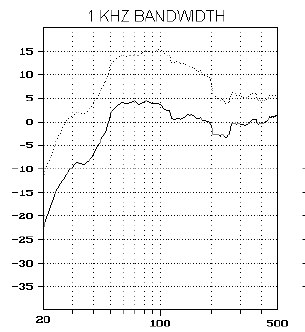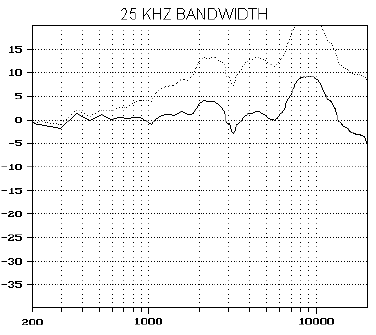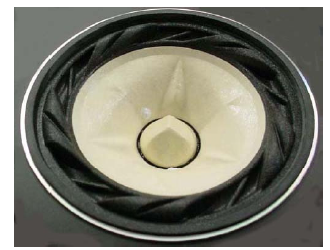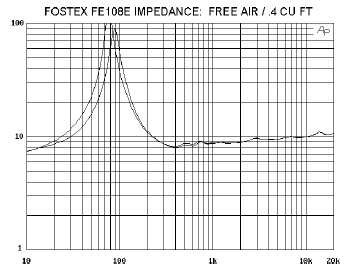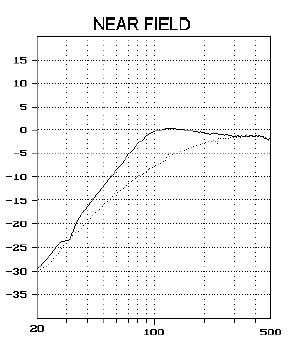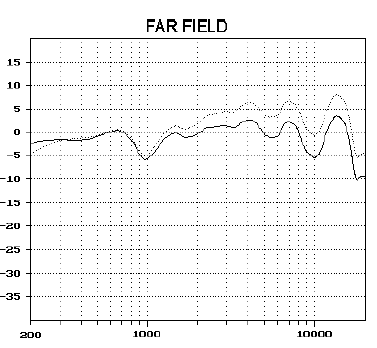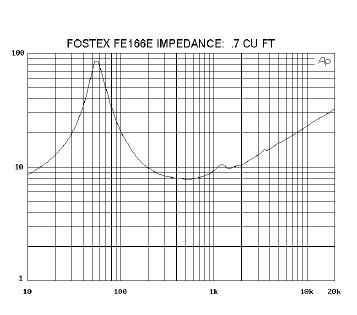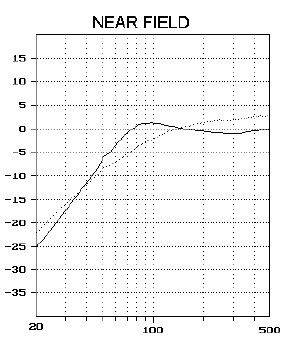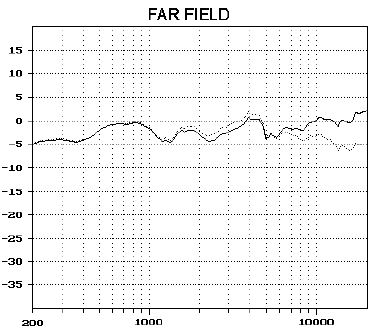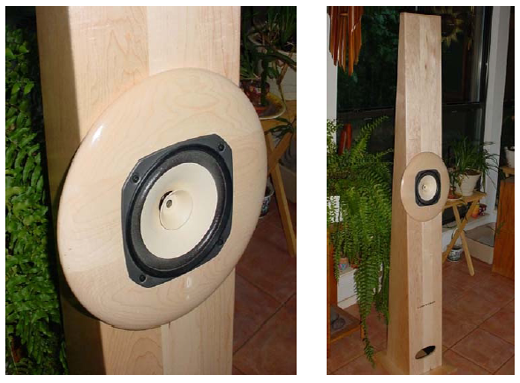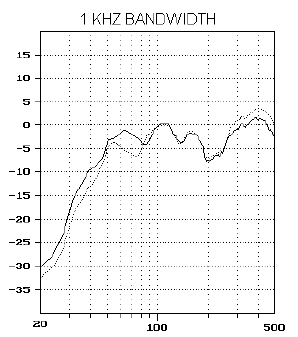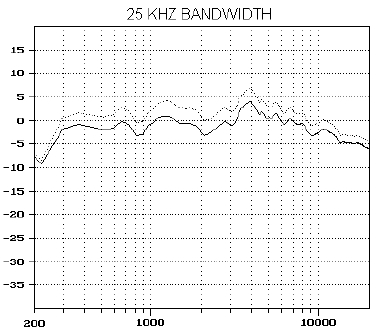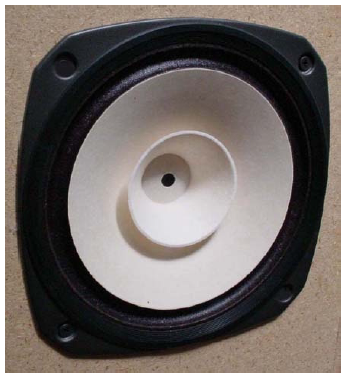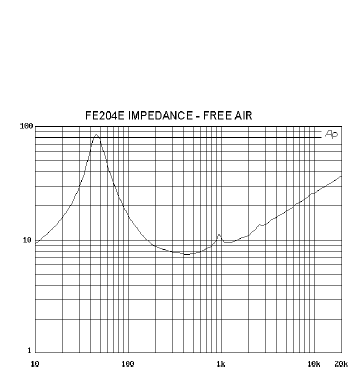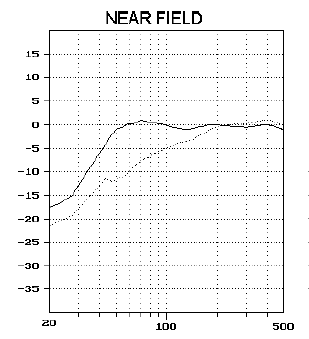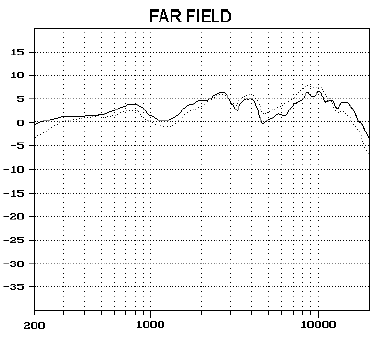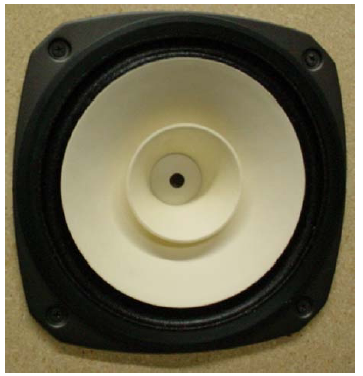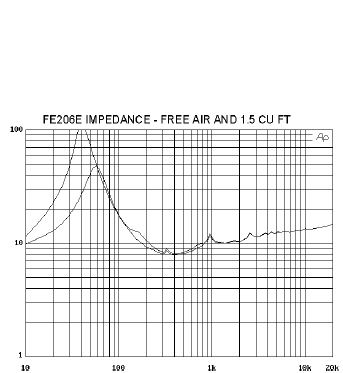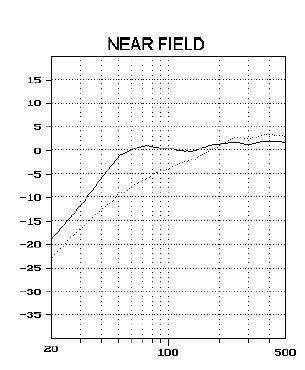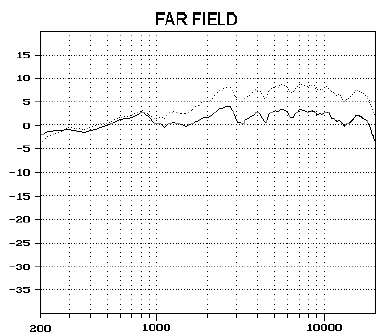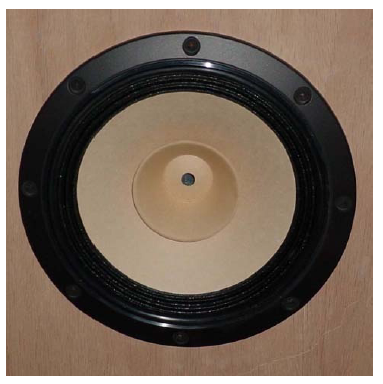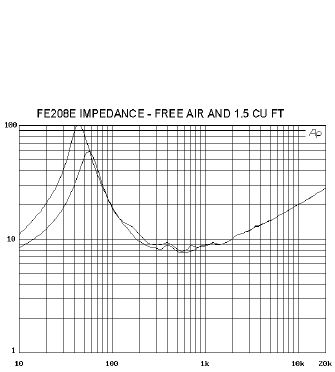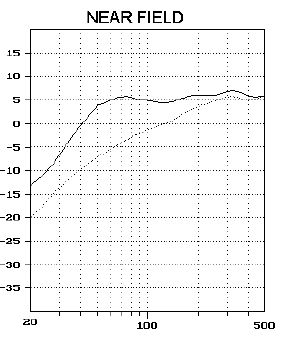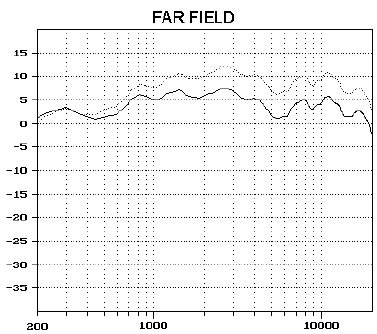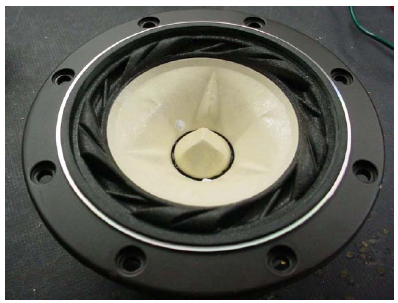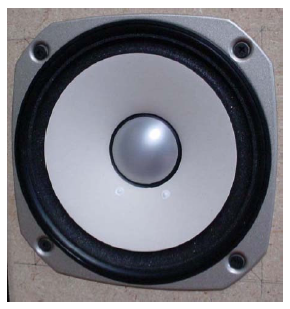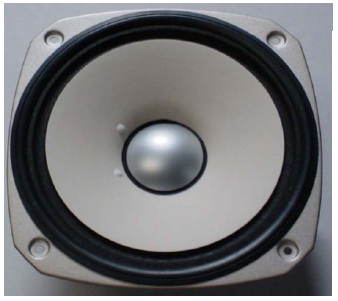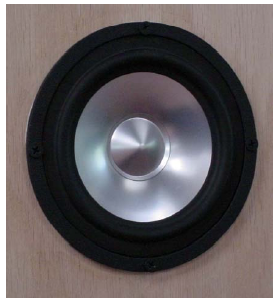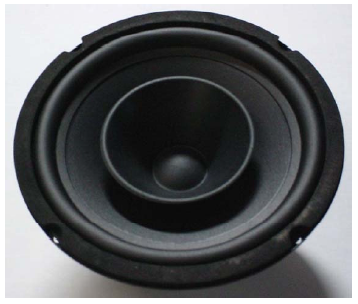Current Source Amplifiers and Sensitive Full Range Drivers
Nelson Pass
Introduction
Conventional wisdom holds that a pure voltage source amplifier is ideal for audio applications, and generally designers of loudspeakers work to that assumption. This belief has particularly been dominant since the development of high power solid-state amplifiers that began in the 1960’s. A small minority of audiophiles thinks otherwise, and these are often people using low wattage tube amplifiers with unusual looking speakers. Well, of course entertainment is full of fringe elements.
A couple of years ago, Kent English and I were playing around with various ribbon tweeters, noting how the ribbons themselves seemed perfectly happy being driven by a current source and without their usual matching transformer. We built an audio current source that delivered 1 amp of AC current per input volt to a maximum of 10 amps. This kind of amplifier is known as a power transconductance amplifier. Such circuits are fairly common in small chips which don’t generate the high current necessary to drive a loudspeaker. Our amplifier had a high output impedance and thus no damping factor, but we found that the ribbon in the tweeter didn't seem to need much damping factor, measuring and sounding a bit better without the matching transformer. We decided that a current source was likely delivering more accurate force/acceleration to the ribbon than a voltage source and after playing with it for a couple of days, we put it away and went on to other projects.
About this same time, Kent and I began playing with full-range drivers, those loudspeakers which deliver bass, midrange and treble from one single cone. In a number of ways, they don’t measure as well as multiple specialized drivers particularly at the bottom and the top, but there is something aesthetically appealing about the simplicity of the idea and on many occasions, they manage to sound very good especially driven by tube amplifiers.
Most interesting are the full-range high-efficiency drivers that deliver the goods with only a watt or so. It’s a big design challenge to produce a good sounding full-range acoustic transducer with 100dB/watt efficiency. When it is properly achieved, you get a wealth of detail, exceptional dynamic range and a sense of musical “liveness” that you don’t often hear elsewhere.
Tube amplifiers seem to bring out the best in such drivers. They have more bottom end, a warmer, mellower mid and upper mid-range, and often more top octave. By comparison, the “best” solid-state state amplifiers make them sound more like transistor radios – less bottom and a, occasionally strident upper midrange. If you are a solid-state kind of guy (like me) you start wondering how that could be, and if you are a tube aficionado, you smirk and say, “I told you so.” The solid-state guy probably starts fixing the response with a parametric equalizer, and the tube guy enjoys his music with a nice glass of wine.
Critical damping -- that resistive combination of electrical source impedance, suspension friction and acoustic load -- occurs when you apply a step pulse to the voice coil and the cone’s motion doesn’t overshoot. Under-damping results in bass notes that hang around a little longer than the amplifier intended. Over-damping has good transient bass control but also suffers a significant loss of bottom end response. Generally, we want something inbetween, something closer to critical damping. Whether we over-damp or under-damp seems to be a matter of taste.
The need for electrical damping is different for each type of loudspeaker and acoustic environment. High-efficiency full-range drivers are more easily damped than other types due to their powerful efficient motors and light cones. Looking at their bass response curves, we conclude that they are easily over-damped, resulting in excessive loss of bottom end. This partially explains the preference for tube amps with such loudspeakers. Anyway, this assortment of observations arrived at a confluence when I hooked up a Son of Zen amplifier (Audio Electronics 1997 #2) to a pair of Fostex 208Es in sealed enclosures. The Son of Zen operates without feedback and has an output impedance of about 16 ohms. This nets a damping factor of 0.5, miniscule compared to the 100 to 1000 you can achieve with regular solid-state amplifiers.
With the low damping factor, the Fostex became a totally different speaker. It suddenly had bottom end response and a better top end. It still had the same annoying upper midrange that had Dick Olsher (www.blackdahlia.com) devise his passive equalization network. The low damping factor didn’t cure the upper midrange faults but it seemed to work improvements everywhere else. A year later, Kent has acquired about 20 different full-range mid to highefficiency drivers for us to play with (that’s part of his job description) and we’ve spent as much time exploring them as we reasonably could, trying different things to coax the best sound out of them with a current-source amplifier and various passive parallel networks.
What is a High-Efficiency / Full Range Loudspeaker?
To arrive at high efficiency and wide bandwidth, we fundamentally need two things – a great motor and a great radiating surface. A great motor means getting the most force/acceleration for the least amount of electricity. It means a big magnet with lots of magnetic density in a precisely machined gap where a very light voice coil sits perfectly aligned. This voice coil is wound in a cylindrical assembly that maximizes the current exposed to the magnetic field and generates the highest amount of force (acceleration) for a given amount of electrical current. In other words, we need an expensive motor. \ The other half of the equation is the cone assembly attached to the voice coil. In contrast to the fine motor engineering, here we start seeing more of the black art involved in designing such a drive unit. The radiating surface for such a loudspeaker must be very light to maximize the acceleration from the voice coil. At the same time, the cone needs to be stiff and inflexible so that this acceleration can be accurately transmitted to the entire radiating surface at once. When this fails at high frequencies (which it will), the cone needs to decouple the force gracefully to a smaller and smaller surface so that it effectively shrinks at the highest frequencies. In practice, it’s a lot of art coupled to even more trial and error. Thomas Edison could have made a fantastic version of such a speaker and for his time, I believe he did. 3 Besides obviously requiring low power and only one driver per channel, the advantages to a full-range efficient loudspeaker are found in three areas. First, the speaker requires no crossover network to apportion frequency bands to different drivers and thus does not suffer the phase shifts that come with such filters. Second, the sound radiates from one point source - diffraction effects between multiple drivers are removed. Third, the electrical and mechanical qualities required by such drivers give rise to subjectively good dynamic range and detail, assuming we deal with an ideal example of a full-range efficient driver.
Naturally, the reality can fall well short of the promise. Real drivers tend to be too limited to satisfactorily deliver both the treble and bass octaves of audio. The decoupling of high frequencies on the cone is often not smooth, and with that come response peaks and dips in the upper midrange often followed by a high frequency roll-off. On the bottom end, overdamping of the very light cone contributes to a roll-off starting an octave or more above resonance so that many examples of such drivers fall short below 100Hz. Driven from a voltage source in a closed box, the response of such light-weight cones can be down by as much as 15dB at resonance. Some of these drivers are better than others, most are delicate and some of them are very expensive.
Power Transconductance Amplifiers
This is a fancy name for a power current source. An input voltage causes the amplifier to deliver a proportional output current. Of course this same sort of thing would occur with an ordinary amplifier driving a pure resistance but a loudspeaker circuit is not purely resistive. It possesses numerous reactive elements, some due to inductance and capacitance in the electrical circuit, some from the reaction to motion of the voice coil in a complex mechanical system. Fed by a voltage amplifier, the current through the driver’s voice coil is not directly or instantly proportional to the input to the amplifier. Ordinarily, loudspeakers are designed around this assumption but the “piston model” of loudspeaker design assumes that the acoustic output mirrors the acceleration of the voice coil/cone assembly over a specific range and this is reflected by the current through the voice coil.
The most precise way to develop that specific current is with a current-source amplifier. Such an amplifier ignores the impedances in series with the circuit, the resistance and inductance of the wire and voice coil and the back electromotive force (EMF) produced by the cone motion. As I said, most speakers are designed around voltage sources but there are few instances where a current source can be used to advantage. One of the best ones is the category of full-range high-efficiency drivers.
Why is that? First, such drivers are able to take advantage of acoustic and suspension resistance to achieve some or all of the damping that they need to prevent excessive overhang because their moving mass is very light. With their efficient motors, even a high source impedance is often enough to give critical damping. Second, their impedance curve tends to reflect their needs – more current both at low frequency resonance and in the treble, two areas where frequency response has fallen off with increased speaker impedance. If you want, the current through the voice coil can be made constant regardless of the variations in the acoustic environment. The voice coil force is invariant whether the cone is loaded into a horn, sealed box, bass reflex or whatever else you care to mount it in.
Third, they are very easy to adjust in the upper midrange and high end where you typically run into peaking problems. Most of these drivers are too hot in the upper midrange and quite a few of them fail to make it to 20KHz. With a simple parallel network, you can arrange for a midrange dip followed by an increase at the top, evening out the loudspeaker response. With the higher quality drivers, you more than not simply want an equalized “shelf” where everything above a specific frequency is evenly attenuated.
The adjustments for damping at the low end and the mid/high peaking are easily accomplished using R, RC or RLC (resistor/inductor/capacitor) networks wired in parallel with the output of the amp. You occasionally see this sort of equalization with full-range highefficiency drivers using voltage-source amplifiers, but there the elements are paralleled and then placed in series with the driver. With a current source, the equivalent circuit becomes the elements placed in series and then paralleled with the driver.
Of course with a current source, there's the added benefit that the resistive element of the speaker cable and the connection points can be made to largely disappear. To obtain the best results, the loading network is placed close to the driver instead of the amplifier. The following pages will show what we found with a variety of full-range efficient loudspeaker transducers when we drove them with an active current source and experimented with parallel networks to shape the response to our liking.
Most of the examples we will examine do not require true current source amplifiers, only amplifiers of quite high output impedances. Most of these cases will be happy with an output impedance of approximately 47 ohms or so and prefer 47 ohms loaded in parallel with the output of a current source. That being the case, you can build a Thevenin Equivalent of such a current source by placing a large resistor (here later referred to as R0) in series with the output of a high wattage voltage source amplifier and get similar results.
I’m not saying it will equal a spiffy First Watt F1 (being Class A and no feedback and all), and your resistor will run hot. On the other hand, you probably already have such a voltagesource amplifier and some of these speakers are quite cheap, allowing you a taste of these forbidden pleasures without high expense. I want to emphasize that this does not serve as any sort of comprehensive guide to designing systems around this approach. You can build up the examples and they will probably measure about the same. But remember that we are mostly restricting ourselves to the sealed box case for simplicity’s sake. In the real world and most of time, these drivers are used in an enclosure that also utilizes the back wave of the driver. Additionally, the best measured curve is often not the best sounding one so be prepared to try various values to get satisfactory sound.
Amplifier / Loudspeaker / EQ network Model
The following schematic will be referenced through the rest of the article: This diagram shows a current-source amplifier, the simplified model of the loudspeaker's impedance and the generalized network that we can parallel with the speaker to enhance its performance. The speaker model consists of L2/R2/C2 that model the fundamental resonance, and R3/L3 give us its DC resistance and high frequency inductance. A good example of this is the simulation of the Pioneer b20fu20-51 driver. The values L2 = .05 H, R2 = 27 ohms, C2 = 300 uF, R3 = 7 ohms and L3 = .1 mH give a reasonable facsimile of the measured free-air impedance curve shown below.
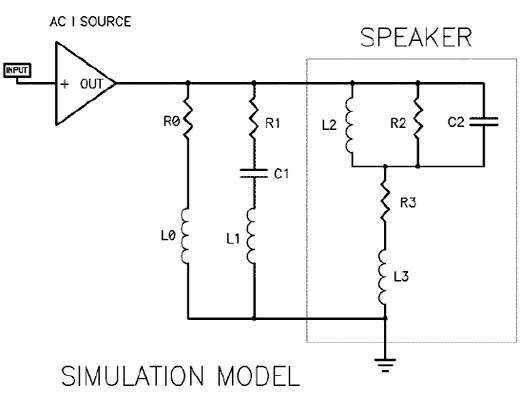
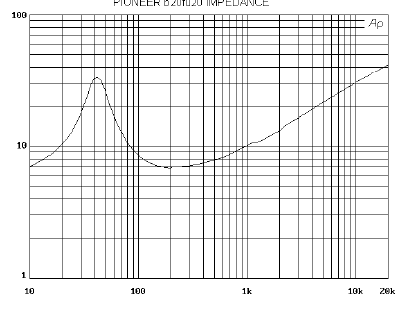
Unless otherwise noted in this discussion, we will be addressing the driver mounted in a sealed box of a given volume, as it is the easiest design to consider. Horns and rear-loaded acoustic systems are more complicated to simulate and measure and the test results are more difficult to duplicate and interpret. One advantage to a sealed box for fullrange drivers is that the excursion becomes limited below resonance, which can reduce distortion particularly at higher levels. Driven by a voltage source, we usually see a response loss anywhere from - 6 to -15dB at low-frequency resonance and a treble that increases or declines (or both) depending mostly on the cone construction and voice coil inductance. Driven by a current source, we note that the bottom end is bumped up at resonance and the top end is increased when compared to the performance of the voltage source.
Let's assume that we want to achieve optimal frequency response for a given system. This is not necessarily the best-sounding system possible but causes less subjective arguments. We can trim the damping "Q" of the low frequency roll-off knee by trying different values for R0 (L0 = 0 in this case) until it flattens out to our taste. Most of the drivers we worked with were happy with values from about 22 ohms to about 47 ohms. It is surprising that so little damping gave such dramatic results but as previously pointed out, this category of loudspeaker responds well to small amounts of damping.
Usually we also want to adjust the upper midrange and high end. Often these drivers will exhibit an upper-mid peak followed by a decline before the upper-most treble is reached. We can compensate for this by our selection of R1, C1 and L1, which can be used either to create a shelf or a dip to flatten out the response. With these models in mind, we measured all the sample speakers of interest, developing networks to optimally flatten out their response with a current source, and comparing this with the same speaker driven by a voltage source. We used a Vidsonics “virtual crossover” substitution box to play with the parallel loading and took both near-field (from an inch or so) and far-field (from 1 meter) response measurements using Mlssa. Again, the results here are not necessarily the bestsounding ones achievable and I am not attempting to address this subject as such, given the wide range of source material, listening environments and subjective tastes. Typically, these exact network figures are not the ones listeners will subjectively prefer. Usually this is because listeners tend to prefer a higher value for R1 than is shown on the table. If you decide to use one of these networks, consider the possibility that R1 is the minimum value and use a switch or high-power (5 watt) potentiometer to variably increase the value to as much as twice R1. Less often you might consider a different value for L1 to trim the treble.
I repeat: Consider this as an experimental guide and a good starting point. Be prepared to change the values to suit your needs and remember that these figures were obtained in stuffed sealed enclosures in a large room placed well away from the wall. Your results will certainly vary. Also remember my comments reflect off-hand reactions. Please do not treat them as reviews.
The following table shows the values that resulted in improved frequency response curves with current sources for different speakers in different sized boxes:
DRIVER
BOX cf
RO
LOmH
c1 uF
r1 OHMS
L1mH
LOTHER DX55
0.7
--
0
10
2.7
0
LOTHER DX55
0.7
--
0
10
2.7
0
LOTHER DX55
0.7
--
0
10
2.7
0
LOTHER DX55
0.7
--
0
10
2.7
0
LOTHER DX55
0.7
--
0
10
2.7
0
LOTHER DX55
0.7
--
0
10
2.7
0
LOTHER DX55
0.7
--
0
10
2.7
0
LOTHER DX55
0.7
--
0
10
2.7
0
LOTHER DX55
0.7
--
0
10
2.7
0
LOTHER DX55
0.7
--
0
10
2.7
0
LOTHER DX55
0.7
--
0
10
2.7
0
LOTHER DX55
0.7
--
0
10
2.7
0
LOTHER DX55
0.7
--
0
10
2.7
0
LOTHER DX55
0.7
--
0
10
2.7
0
LOTHER DX55
0.7
--
0
10
2.7
0
LOTHER DX55
0.7
--
0
10
2.7
0
* Mini-Me is the Lowther Mini-Medallion rear loaded horn enclosure. Horn is the KleinHorn, a 20 foot long 30 Hz rear loaded horn with a 30 sq ft mouth. Article to follow shortly.
Now that you have an overview of the interface network, let's look at the individual drivers in more detail. In the following pages, you will see a picture of the driver, an impedance curve, the near and far field response curves for the loudspeaker in the box described above. The dotted line is driven by a voltage source and the solid line is a current source with the parallel network in the above table.
Lowther DX55
Comments: The DX55 probably has the best treble detail of the drivers tested and also enjoyed some of the biggest improvements being driven by a current source. I consider it the best single excuse to use a current source and it needs little or no additional damping in the bass, having but a small peak in a sealed box. It ended up being the driver of choice for the Kleinhorns since the horns provide enough low-end extension to make up for the diminutive size of the cones while keeping the excursion low. It is not the least expensive Lowther driver at $1095 /pair, but I am under the impression that the C55 will get most of this for you at $595/pair, making it more accessible. Keep in mind that subjectively, you will probably want R1 at a higher value than on the table, probably between 4.7 and 10 ohms.
Lowther DX55 in the Mini-Medallion enclosure
Comments: Lowther America was kind enough to lend me a pair of mini-Medallion enclosures, a relatively small rear-loaded horn designed to be placed against a wall. Used this way, they give significant extension below 100Hz, peaking at around 50-60Hz. The mini- Medallions have a bit of a horn peak at 200Hz. When the current source augmented the bottom end, I found myself putting about ½ lb of Dacron in the mouth to damp out the horn’s pipe resonance. (This is the series of peaks that you get when the mouth of the horn is small compared to the wavelength). The upper left curve with the current source uses that damping. With some network trimming above about 500Hz, the sound was very satisfactory. Again, figure on a real-life R1 of 4.7 to 10 ohms.
Lowther DX55 in the KleinHorns
Comments: Just as corn chips are simply an excuse to eat salsa, Lowthers provide a reason to build big back-loaded horns. These specimens are about 20 feet long and 10 feet high, with a 30 Hz taper and a 30 sqft mouth. The measurements were taken at 6ft because the horn doesn’t develop pressure in the center until you get a ¼ wavelength away. Between the 6 ft distance and the mouth size, expect a roll-off below 50 Hz, which can see here. Farther away, the bottom extends to 40 Hz. The network for the KleinHorn is different from the others in that L0 has a non-zero value to produce the low frequency shelf attenuation. Otherwise, bass below 100 Hz will overpower the midrange and treble.
Lowther PM2A
Comments: This is a classic Lowther design. It has a better bottom end than the DX55 and will play louder but it suffers a bit from the larger cone size in the treble. A little network tweaking trims that out by about 6dB and the result is better sounding than it looks on paper. Jon Ver Halen points out that it's better 15 degrees off axis, and asked me to note that this is the 16 ohm version. Lots of people swear by this driver and if your taste is a little different than mine, you might prefer it to the DX55. The DX4 is probably the best compromise between the two drivers at slightly higher cost. The PM2A lists for $1595 /pair.
Lowther DX4
Comments: Jon Ver Halen at Lowther America said that the DX4 combines some of the best attributes of the PM2a and DX55 and I’m very inclined to agree. In my opinion its top end is still not quite as exquisite as the DX55 but it is significantly better than the PM2A. Again, the high end is said to be better 15 degrees off axis. Here we see the 16 ohm unit mounted in the KleinHorns where it gave very satisfactory performance. Measurements indicate a slightly better bottom end than the PM2As and of course better than the DX55. It costs $1695 /pair.
Fostex FE108E Sigma
Comments: We borrowed this from Ed at the Horn Shop and as far as I can tell, he has the world’s supply by virtue of buying up all he can get. This is one of the smaller units of the latest editions of the Fostex banana fiber cones. An obvious comparison would be to the similarly sized Lowther DX55. The DX55 has much higher efficiency and a more detailed top, the Fostex counters with slightly better bass extension. Madisound sells them for $85/each. At that price, it’s easy to check it out for yourself. I gather that it really prefers a rear-loaded horn, not a sealed box, but you can use it either way with good results. Note: I did not get a picture of the FE108E Sigma but it looks just like the FE208E Sigma so I simply shrank a picture of that.
Fostex FE166E
Comments: The FE166E is an extremely nice driver with a very detailed and smooth top end. I was going to give it short-shrift praise until Terry Cain sold me a pair of his Abbey loudspeakers which use the FE166E. Spending a couple of days with the Abbeys showed me that Terry’s Voigt-Pipe type enclosure produces more bottom end than I would have imagined possible. Hence this Fostex unit was instantly upgraded to “best possible $61 driver”.
Fostex FE166E in Abbeys
Comments: As described in the previous page, these enclosures elevated the FE166Es to a highly recommended status. Note that with a current source, you need different values and a higher damping figure is appropriate. This seems to be a general characteristic of rearloading and I think you can expect it with most of these drivers. You will probably also find that with a current source and R0 at 10 ohms, a half pound of Dacron sitting in the bottom end of the pipe smoothes out the bass a bit. This is not necessarily needed with a voltage source unless you think the bass is overdone, which is not likely.
Fostex FE204E
Comments: The FE204E is an older Fostex design and no longer listed for sale but on the assumption that you might already own one (which I do), it is included here. We were able to get marginal improvement on the top end and dramatic results on the bottom. Comparing it to the older FE208E, it doesn’t extend as low in the bass but the upper mids seemed a bit smoother if less detailed.
Fostex FE206E
Comments: This is my other favorite Fostex driver. If you are looking for more or louder bass than you are getting with a FE166E and you’re willing to give up a little top end detail, then this is a good choice. It will take more power, has a 96dB sensitivity and if the specs don’t lie, it also has the greatest excursion of the bunch. They sell for $84 and if I were on a tight budget, I would consider this or the FE166E as best buys.
Fostex FE208E
Comments: Like the FE204E, the FE208E is also one of the older generation of Fostex 8-inch designs. Dick Olsher showcased it in his BassZilla project and until more recently, it was a darling of the Fostex lineup. It now suffers limited availability and may be discontinued but if you have one, you can put it to good use. Like Dick’s, the EQ network looks to take some of the upper midrange out as it can get tiring over time, but you will instantly notice the 10dB improvement in the bass.
Fostex FE208E Sigma
Comments: I would have assumed that the FE208E Sigma was intended to be a direct replacement for the FE208E, but the mid and top end make me rethink that. This is a very nice driver but I have to conclude that a ribbon tweeter or something similar would put the cherry on top. Taken alone, it rolls off a bit much for my taste. The 4KHz peak of the uncorrected driver is easily taken care off and it’s pretty inoffensive. With a 120-watt rating and a 97dB sensitivity, you can get a lot of sound out of this $175 driver.
Fostex FF165K
Comments: Another nice unit for $61. Stock, it lacks some treble but this is easily improved upon. I notice that Fostex seems to have three approaches for getting full-range performance in the high end. The FE series uses “whizzer” cones to good effect and the FF series uses an aluminum center. I can’t figure out what the FE Sigmas are doing but they look cool. In any case, the FF165K has 94dB sensitivity, works well as a full-range driver, betters its bigger brother in the treble but of course is not as good in the bass.
Fostex FF225K
Comments: I look at this driver and remember the JBL LE8. Well, if you’ve always wanted the LE8, maybe you’ll want to put down $94 on this very efficient and fairly neutral device. I’ve never seen a real curve of the LE 8 and I don’t remember that much about their top end. This one, however, needs some kind of tweeter and while I think the real maximum excursion is bigger than the spec, I would treat it gently with the “Jurassic Park” sound track. It has 96dB sensitivity and if you bring in a good tweeter, maybe a nice ribbon above 5K, I think you’ll really have something.
Jordan J92S
Comments: The J92s is not considered a high-efficiency driver at what appears to be less than 90dB/watt, but it is very, very smooth and a wonderful speaker. It excels at one very difficult thing – to still sound good after the honeymoon is over. We got ours at $70 each and I understand they are twice the price now but still worth it. Magnetically shielded, they also make great computer speakers. You’ll notice here that the response curves are extremely similar. As pointed out before, it appears that the high-efficiency drivers make the most out of a current source and here we don’t see any particular advantage. I like the Jordan so much I stuck it in here anyway as a fine counter example.
Pioneer BU20F20-51F
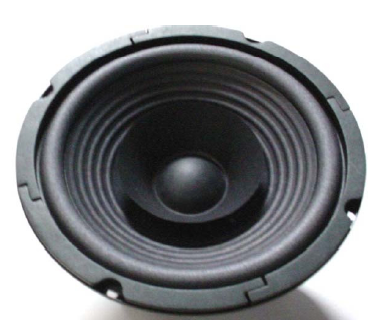
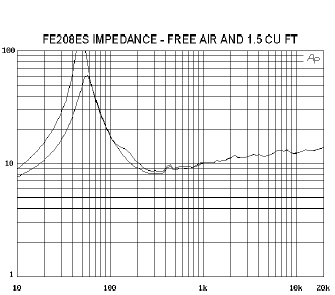
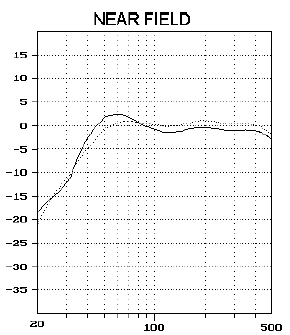
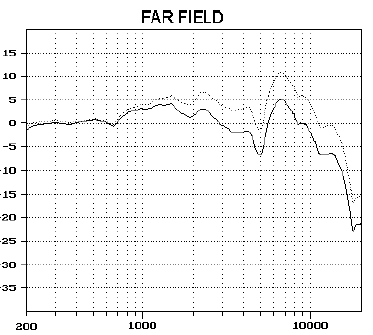
Comments: This speaker gets the prize for “listenable at lowest cost”. It is not as efficient as a Lowther or Fostex but it has a smooth-enough character to be fairly easy on the ears. It’s not as detailed but that’s alright if you like Lounge music. It also can take more abuse than its more refined competition if you like to dance. Driven by a voltage source, there is a temptation to stick a tweeter on the top and indeed, an inexpensive ¾” dome with a 1uF cap just about does the trick. With a current source, you obviously get more bottom end and it does require a network to shelf down the treble to what you see here - a simple RLC in parallel will do nicely. The R0 value is 23 ohms, low enough that if you want to play with these effects without owning a current-source amplifier, you can put 25 ohms of power resistor in series with the output of a 100-watt amp and get a Thevenin equivalent of a current source loaded by the same resistance. Will it sound as good? You have my email address – let me know.
GOLDWOOD
Comments: The Goldwood is the cheapest driver of this bunch, being slightly less than the Pioneer, but what’s a couple of bucks between friends? These were my least favorite of the group – they lack the dynamics and detail that we are looking for. They’ll work well enough for your bathroom and other such applications but as audiophile efforts, they aren’t nearly as satisfying as the Pioneer drivers for $4 more.
Conclusion
So here you have it – a re-examination of some things that have been known for a long time but were here tested with currently available drivers. It’s easy to dismiss the older ways. Somewhere in the 1960s, the speaker/amplifier interface took a left turn and headed off to high-power voltage source amplifiers and speakers designed to lean on them for performance. A small group of iconoclastic cranks has stayed interested in these fossils and in the end, we have to recognize full-range high-efficiency speakers as offering elegance, charm and a different sort of quality.
Current sources and amplifiers with low damping offer interesting possibilities for improvement with these drivers but they require considerable work to get the enclosures, electrical networks and acoustic environment just right. Remember, you don’t have to own a current-source amplifier to put this information to work. Placing R0 in series with the output of a powerful voltage-source amplifier instead of in parallel with a current source will give similar results. If R0 is 47 ohms or higher, you are going to want a big amp, say 300 watts, but in any case, be certain to use a high power resistor of 50 watts or more. That said, it’s all just entertainment and I hope it inspires some of you to have some fun.
Bon Appetite.
Thanks to: Kent English, Desmond Harrington, Jon Ver Halen, Terry Cain, Ed at the Horn Shop, Chris and Matt Williams. Also thanks to Sarajan Ebaen for last-minute editing.
Copyright First Watt 2004
Addendum: Simulation Summary
These are simple simulations of a driver’s impedance with given networks and a currentsource amplifier. These may be useful to you as a general guide to recreate these results with an equalizer and voltage source, or better yet, if you want to get creative with networks and a current source. They are not carefully calibrated – they just resemble the real speaker’s impedance. Along with the simulated impedance, you will see a simulation of these drive units driven by a current source in parallel with the equalization networks given on the previous table. This curve represents the voltage appearing across the driver terminals.
DRIVER
BOX cf
RO
LOmH
c1 uF
r1 OHMS
L1mH
LOTHER DX55
0.7
--
0
10
2.7
0
LOTHER DX55
0.7
--
0
10
2.7
0
LOTHER DX55
0.7
--
0
10
2.7
0
LOTHER DX55
0.7
--
0
10
2.7
0
LOTHER DX55
0.7
--
0
10
2.7
0
LOTHER DX55
0.7
--
0
10
2.7
0
LOTHER DX55
0.7
--
0
10
2.7
0
LOTHER DX55
0.7
--
0
10
2.7
0
LOTHER DX55
0.7
--
0
10
2.7
0
LOTHER DX55
0.7
--
0
10
2.7
0
LOTHER DX55
0.7
--
0
10
2.7
0
LOTHER DX55
0.7
--
0
10
2.7
0
LOTHER DX55
0.7
--
0
10
2.7
0
LOTHER DX55
0.7
--
0
10
2.7
0
LOTHER DX55
0.7
--
0
10
2.7
0
LOTHER DX55
0.7
--
0
10
2.7
0










